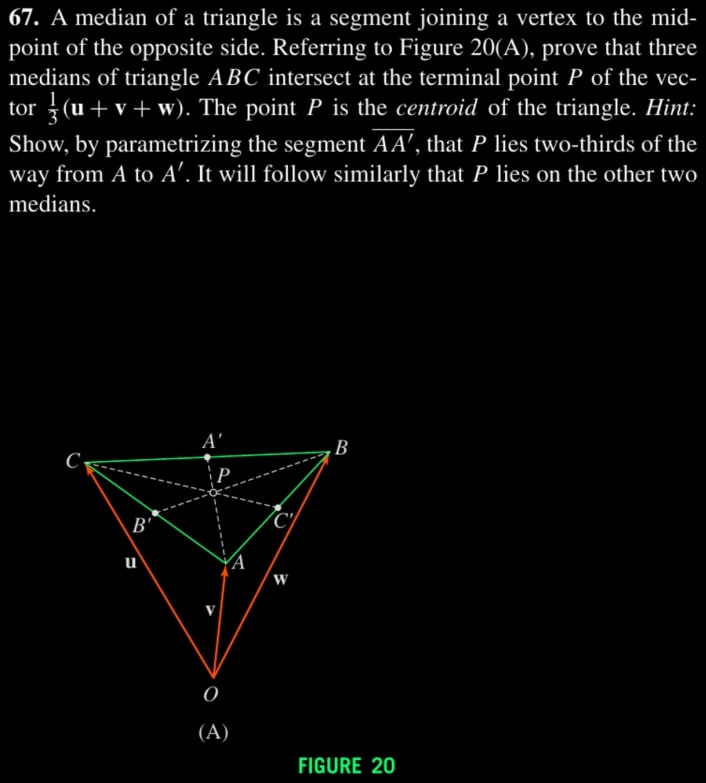Ch.12, Sec.2
$\newcommand{\nfrac}[2]{\frac{\displaystyle{#1}}{\displaystyle{#2}}}$
Exercises
Ex. 2.60

\begin{align*} L &= P_0 + tv \\ &= (x_0,y_0,z_0) + t (a,b,c) \end{align*} \begin{align*} x = x_0 + ta \rightarrow t = \nfrac{x-x_0}{a} \\ y = y_0 + tb \rightarrow t = \nfrac{y-y_0}{b} \\ z = z_0 + tc \rightarrow t = \nfrac{z-z_0}{c} \end{align*}
Ex. 2.66

Be definition of a slope, We have two points on the line: $(x_0, y_0)$ and $(x_0 + 1, y_0 + m)$.
By page 640, We take the directional vector: $v = (x_0 + 1, y_0 + m) - (x_0, y_0) = (1,m)$.
Thus, \begin{align*} x = x_0 + (1)t \rightarrow t = x - x_0 \\ y = y_0 + (m)t \rightarrow t = \nfrac{y - y_0}{m} \end{align*} Hence, The symmetric form is satisfied.
Ex. 2.67

\begin{align*} \vec{OA} &= v \\ \vec{OA’} &= \nfrac{1}{2} (w-u) + u \\ &= \nfrac{1}{2} (w+u) \\ \vec{OA’} - \vec{OA} &= \nfrac{1}{2} w + \nfrac{1}{2} u - v \end{align*} Taking $2/3$ of it: $\nfrac{2}{3} (\vec{OA’} - \vec{OA}) = \nfrac{1}{3} w + \nfrac{1}{3} u - \nfrac{2}{3} v$.
$P$ is the terminal of vector: $v + \nfrac{1}{3} w + \nfrac{1}{3} u - \nfrac{2}{3} v = \nfrac{1}{3} w + \nfrac{1}{3} u + \nfrac{1}{3} v$.
Symmetrically, Taking $\nfrac{2}{3}$ of segments $BB’$ and $CC’$ yields the vector $\nfrac{1}{3} w + \nfrac{1}{3} u + \nfrac{1}{3} v$, and thus point $P$ lies on the other two medians as well.